The AOZORA project aims to implement a 16-bit computer with mainly 74-series TTL ICs on solderless breadboards, providing an open and easy platform for educational purposes.
"AOZORA" is an acronym for "Allgemeine Ordentliche SOgenannte RechnenAnlage", which means "general-purpose well-organized so-called computing machinery". AOZORA may also be transcribed as Japanese Romaji to Kanji (漢字, Chinese characters) "青空".
A1 features:
- Load-Store Architecture
- 16 general-purpose registers
- 16-bit word length
- 32-bit address space (4G)
 zxs-un
zxs-un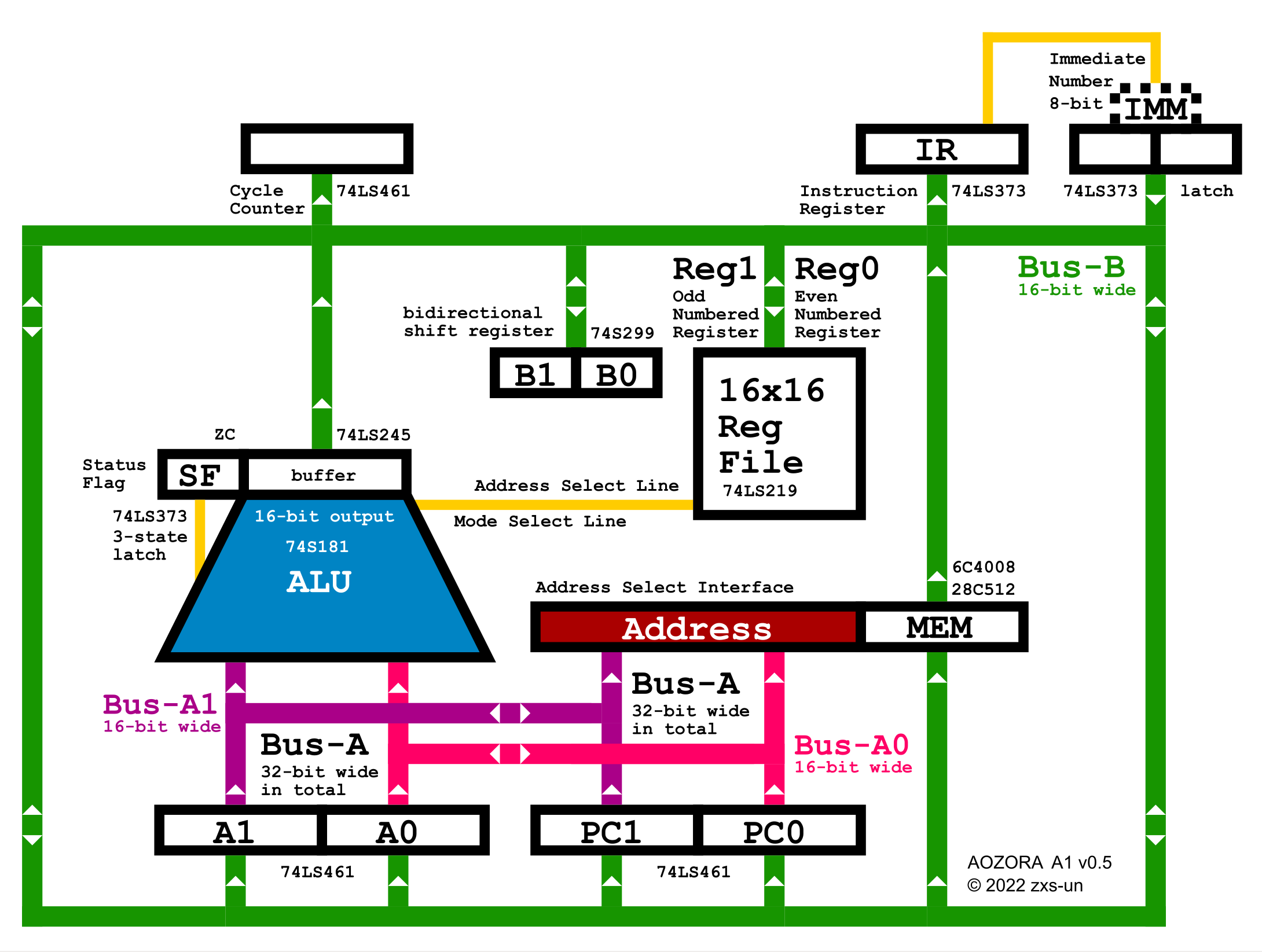

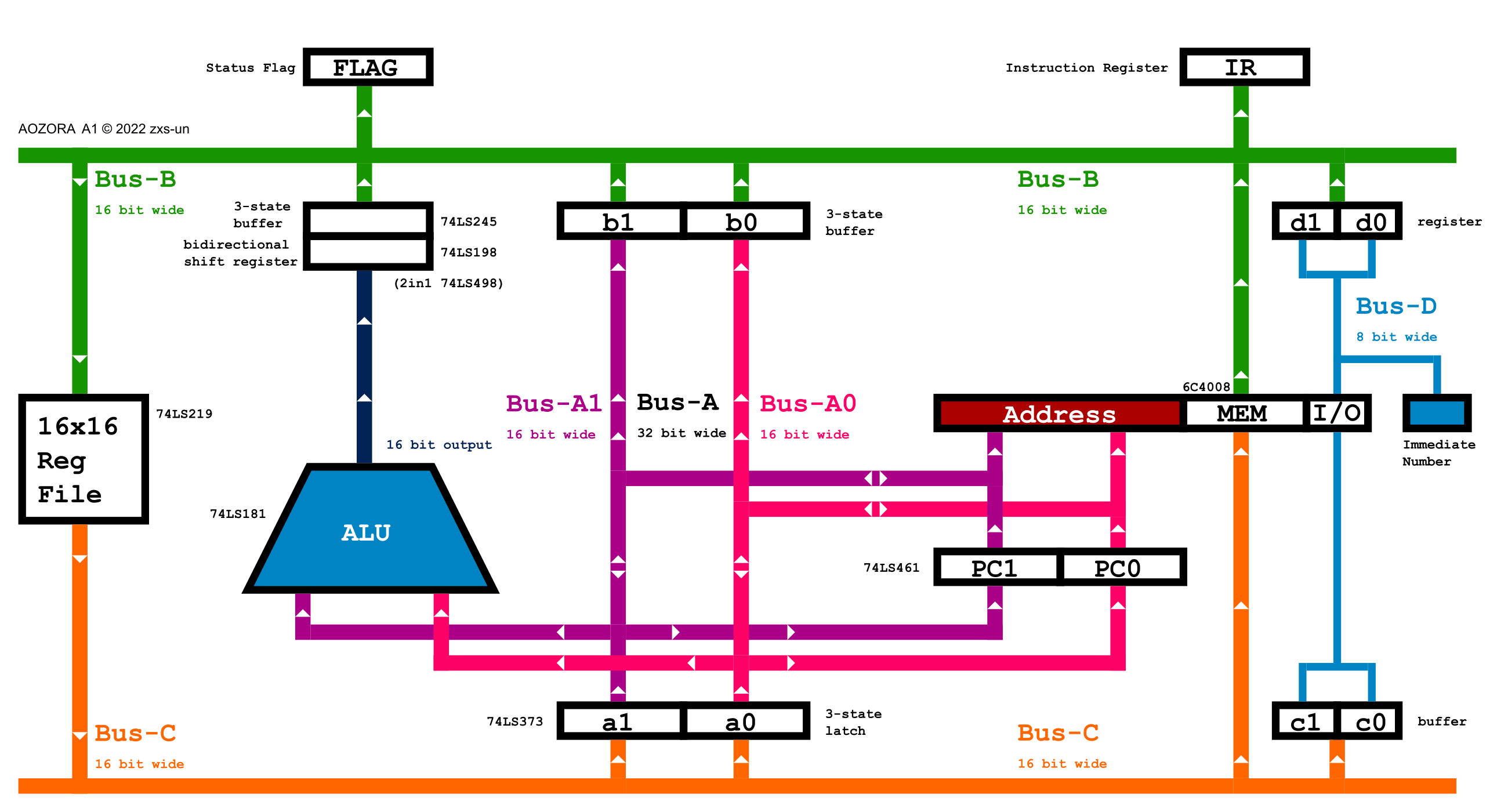
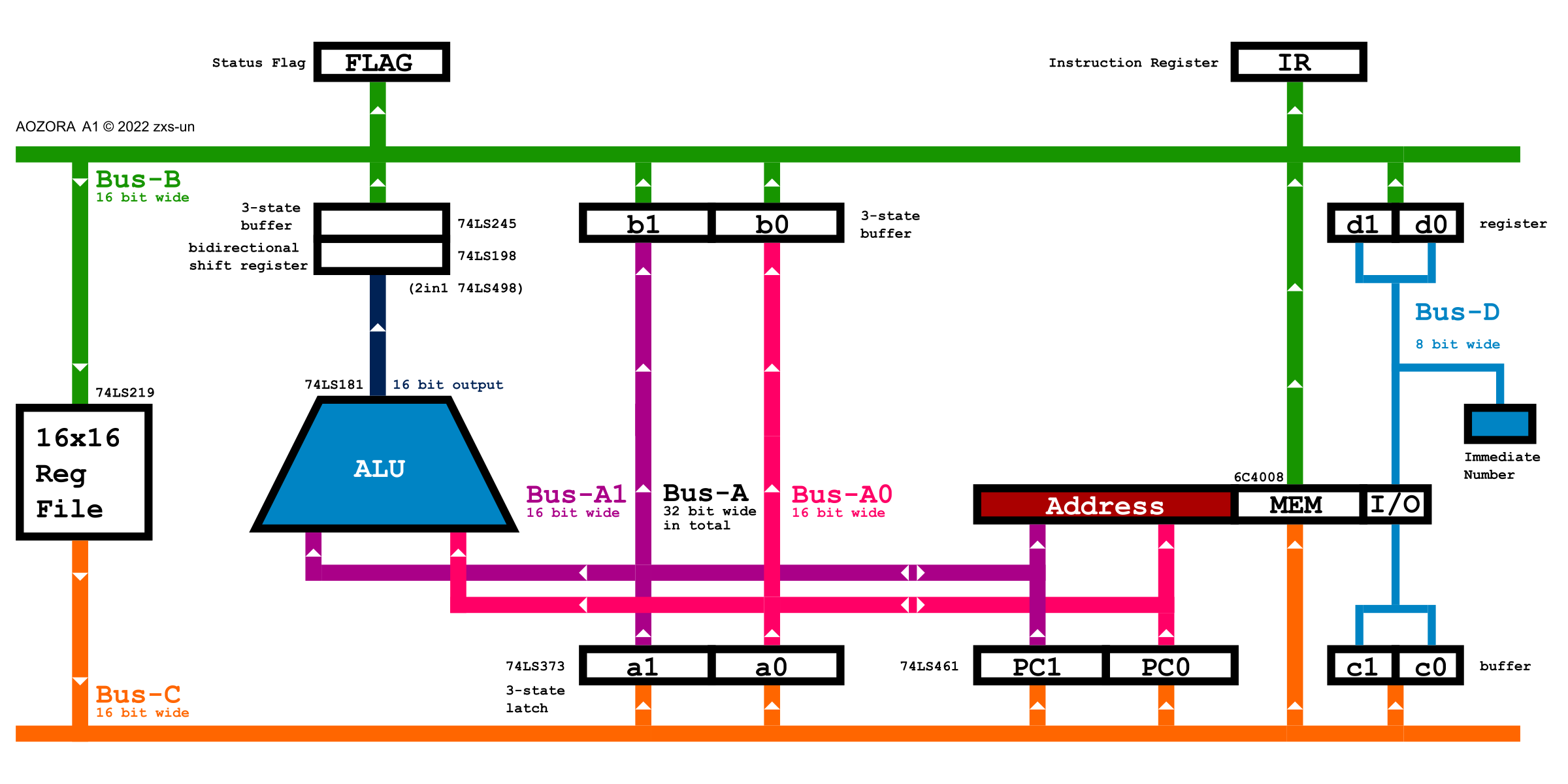
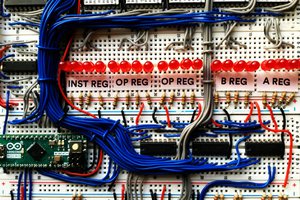
 ARITH-MATIC
ARITH-MATIC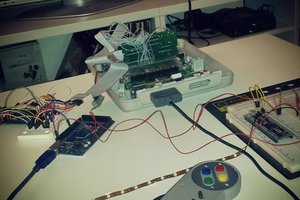
 Ingo S.
Ingo S.
 pondahai
pondahai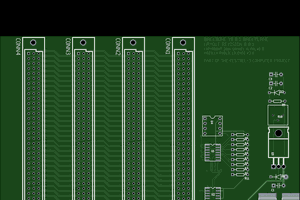
 Samuel A. Falvo II
Samuel A. Falvo II